Frogfishes are small, short and stocky, and sometimes covered in spinules and other appendages to aid in camouflage. The camouflage aids in protection from predators and enables them to lure prey. Many species can change colour; some are covered with other organisms such as algae or hydrozoa. In keeping with this camouflage, frogfishes typically move slowly, lying in wait for prey, and then striking extremely rapidly, in as little as 6 milliseconds.
Few traces of frogfishes remain in the fossil record, though Antennarius monodi is known from the Miocene of Algeria and Eophryne barbuttii is known from the Eocene of Italy.
Range
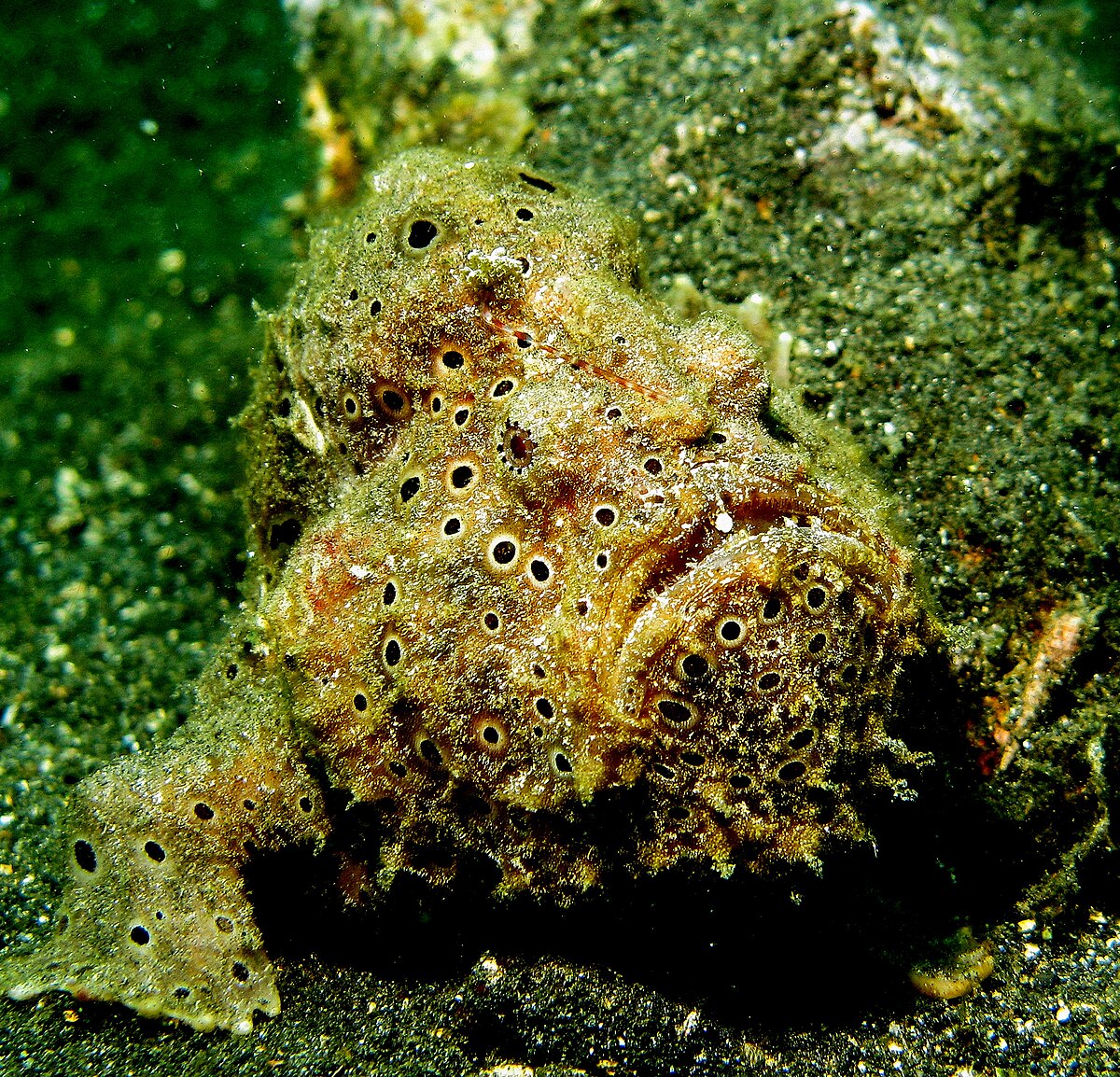
Frogfishes live in the tropical and subtropical regions of the Atlantic and Pacific, as well as in the Indian Ocean and the Red Sea. Their habitat lies for the most part between the 20 °C isotherms, in areas where the surface level water usually has a temperature of 20 °C (68 °F) or more. They extend beyond the 20 °C isotherms in the area of the Azores, Madeira and the Canary Islands, along the Atlantic coast of the United States, on the south coast of Australia and the northern tip of New Zealand, coastal Japan, around Durban, South Africa, and at Baja California, Mexico.[2][3] The greatest diversity of species is in the Indo-Pacific region, with the highest concentration around Indonesia. In the small Lembeh Strait, north-east of Sulawesi, divers have found 9 different species. Frogfish live generally on the ocean floor around coral or rock reefs, at most to 100 m (330 ft) deep.
A few exceptions to these general limits are known. The brackishwater frogfish is at home in ocean waters as well as brackish and fresh water around river mouths.[4] The sargassum fish lives in clumps of drifting sargassum, which often floats into the deeper ocean and has been known to take the sargassum fish as far north as Norway.[5]
Features
A striated frogfish, with upturned mouth, very distinct spinules, and esca in the form of a white worm
A frogfish in Mactan, Philippines
Rather than typical dorsal fins, the front-most of the three fins is called the illicium or "rod" and is topped with the esca or "lure". The illicium often has striped markings, while the esca takes a different form in each species. Because of the variety of colours even within a single species, the esca and illicium are useful tools to differentiate among different varieties.[7] Some of them resemble fish, some shrimp, some polychaetes, some tubeworms, and some simply a formless lump; one genus, Echinophryne, has no esca at all. Despite very specific mimicry in the esca, examinations of stomach contents do not reveal any specialized predation patterns, for example, only worm-eating fish consumed by frogfishes with worm-mimicking esca. If lost, the esca can be regenerated. In many species, the illicium and esca can be withdrawn into a depression between the second and third dorsal fins for protection when they are not needed.[8]
Frogfish have small, round gill openings behind their pectoral fins. With the exception of Butler's frogfish and the rough anglerfish, frogfish use a gas bladder to control their buoyancy[citation needed].
Mimicry and camouflage
A frogfish disguised as an algae-covered stone
For the scaleless and unprotected frogfish, camouflage is an important defense against predators. Some species can also inflate themselves, like pufferfish, by sucking in water in a threat display.[9] In aquaria and in nature, frogfish have been observed, when flushed from their hiding spots and clearly visible, to be attacked by clownfish, damselfish, and wrasses, and in aquaria, to be killed.
Many frogfishes can change their colour.[2] The light colours are generally yellows or yellow-browns, while the darker are green, black, or dark red. They usually appear with the lighter color, but the change can last from a few days to several weeks. What triggers the change is unknown.[2]
Movement
Longlure frogfish realigning its jaw
In open water, frogfishes can swim with strokes of the caudal fin. They also use jet propulsion, often used by younger frogfish. It is achieved by rhythmically gulping water and forcing it out through their gill openings, also called opercular openings, which lie behind their pectoral fins.[10]
The sargassum frogfish has adapted fins which can grab strands of sargassum, enabling it to "climb" through the seaweed.[2]
Hunting
A spotfin frogfish waiting amid the coral
Slow-motion filming has shown that the frogfish sucks in its prey in just six milliseconds, so fast that other animals cannot see it happen.[8]
Reproduction
The female striated frogfish does not tolerate the smaller male after fertilization, and may eat him if he stays close.[12]
 Striated frogfish mating - YouTube
Striated frogfish mating - YouTube
During the free-spawning courtship ritual, the male swims beside and somewhat behind the female, nudges her with his mouth, then remains near her cloaca. Just before the spawning, the female begins to swim above the ocean floor toward the surface. At the highest point of their swim, they release the eggs and sperm before descending. Sometimes, the male pulls the eggs out of the female with his mouth. After mating, the partners depart quickly as otherwise the smaller male would likely be eaten. A few species are substrate-spawners, notably the genera Lophiocharon, Phyllophryne, and Rhycherus, which lay their eggs on a solid surface, such as a plant or rock. Some species guard their eggs, a duty assigned to the male in almost all species, while most others do not.[7][8] Several species practice brood carrying, for example the three-spot frogfish, whose eggs are attached to the male, and those in the genus Histiophryne, whose brood are carried in the pectoral fins.
The eggs are 0.5–1 mm (0.020–0.039 in) in diameter and cohere in a gelatinous mass or long ribbon, which in sargassumfish are up to a metre (3.3 ft) long and 16 cm (6.5 in) wide. These egg masses can include up to 180,000 eggs.[7][13] For most species, the eggs drift on the surface. After two to five days, the fish hatch and the newly hatched alevin are between 0.8 and 1.6 mm (0.031 and 0.063 in) long. For the first few days, they live on the yolk sac while their digestive systems continue to develop. The young have long fin filaments and can resemble tiny, tentacled jellyfish. For one to two months, they live planktonically. After this stage, at a length between 15 and 28 mm (0.59 and 1.10 in), they have the form of adult frogfish and begin their lives on the sea floor. Young frogfish often mimic the coloration of poisonous sea slugs or flatworms.
Fossil record

Very few fossil remains of frogfishes have been found. In the northern Italian formation at Monte Bolca, formed from the sedimentation of the Tethys Ocean in the middle Eocene (45 million years ago), a 3-cm (1.2 in) fossil named Histionotophorus bassani was initially described as a frogfish, but was later thought to belong to the closely related extant genus Brachionichthys or handfish. In 2005, a fossil from Miocene Algeria (3 to 23 million years ago), Antennarius monodi, is the first proven fossil frogfish, believed to be most closely related to the extant Senegalese frogfish.[14] In 2009, a new fossil from the upper Ypresian Stage of the early Eocene found in Monte Bolca, Italy was described as a new species, Eophryne barbuttii, and is the oldest known member of the family.[15]
Taxonomy

Frogfishes belong to the order Lophiiformes, commonly known as anglerfish, which is a member of the superorder Paracanthopterygii with four other orders. They belong to the infraclass Teleostei, the bony fishes, in the class Actinopterygii. There are two subfamilies, Antennariinae and Histiophryninae, which differ in their distribution and reproductive method.
- Longlure frogfish, Bonaire, A. multiocellatus
- Scarlet frogfish, A. coccineus
- Painted frogfish, A. pictus
- Warty frogfish, A. maculatus
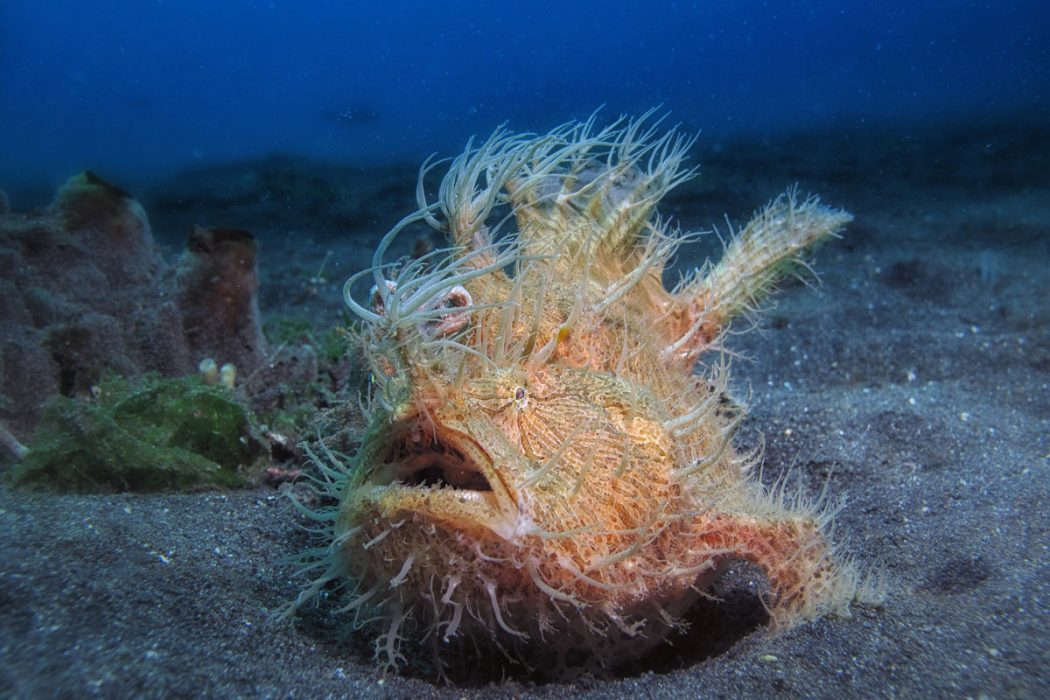

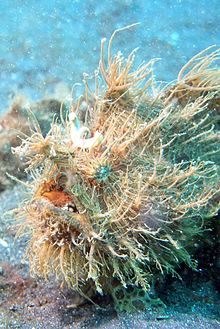

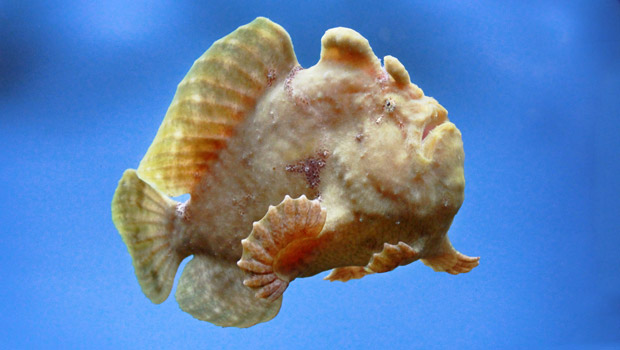





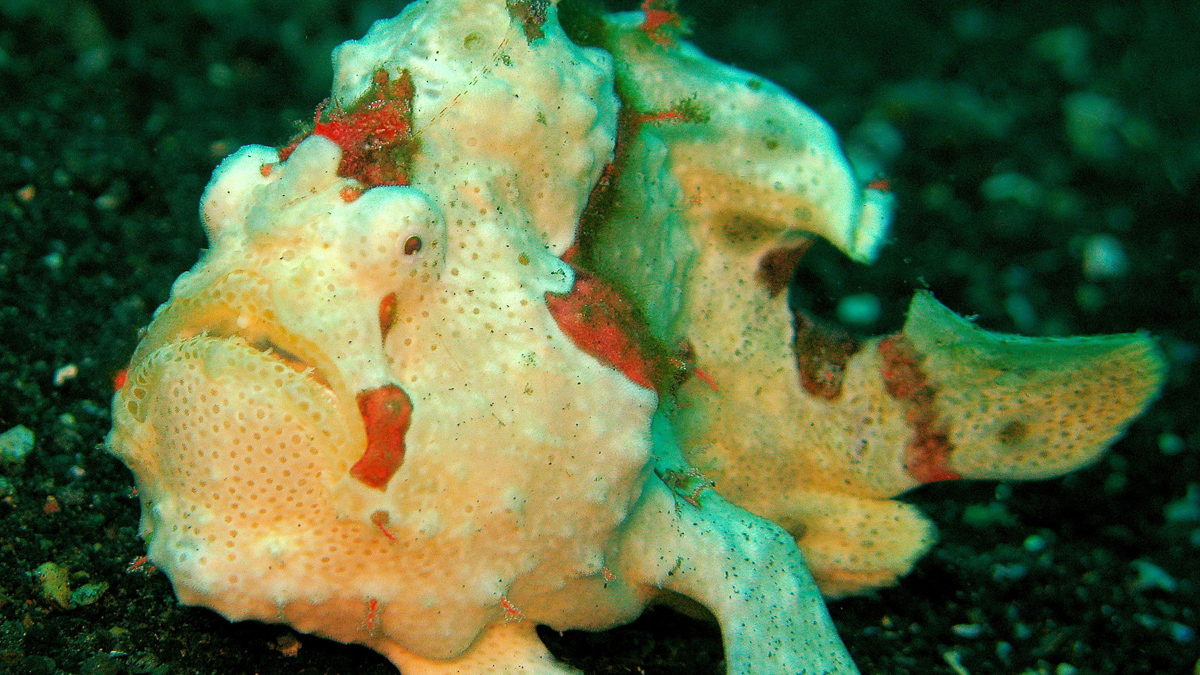

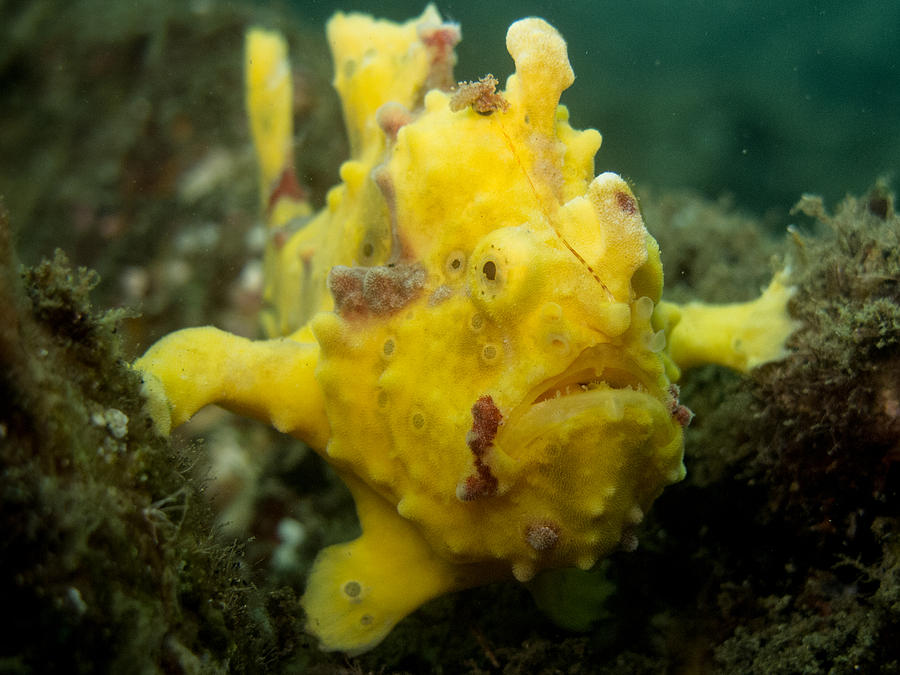
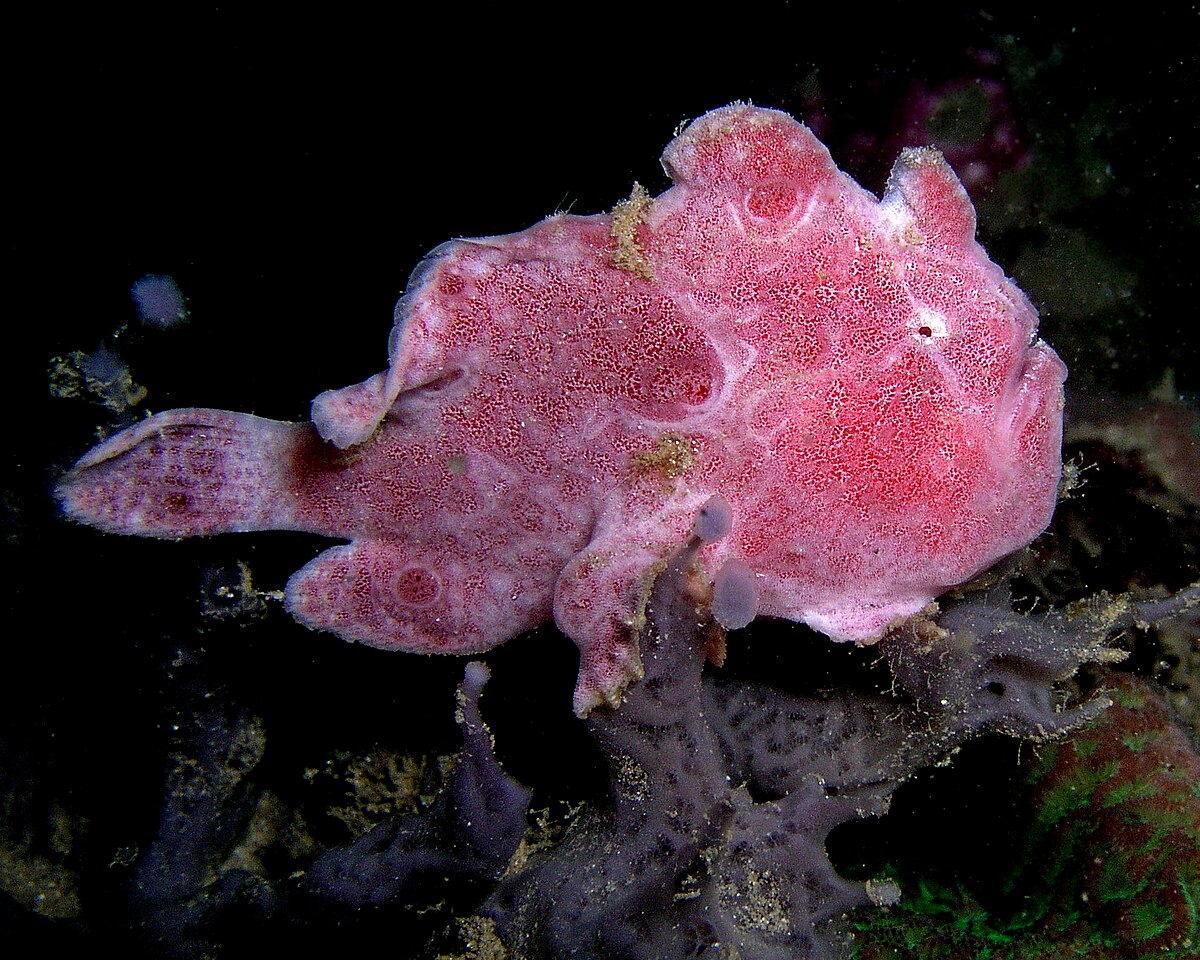







No comments:
Post a Comment
Note: Only a member of this blog may post a comment.